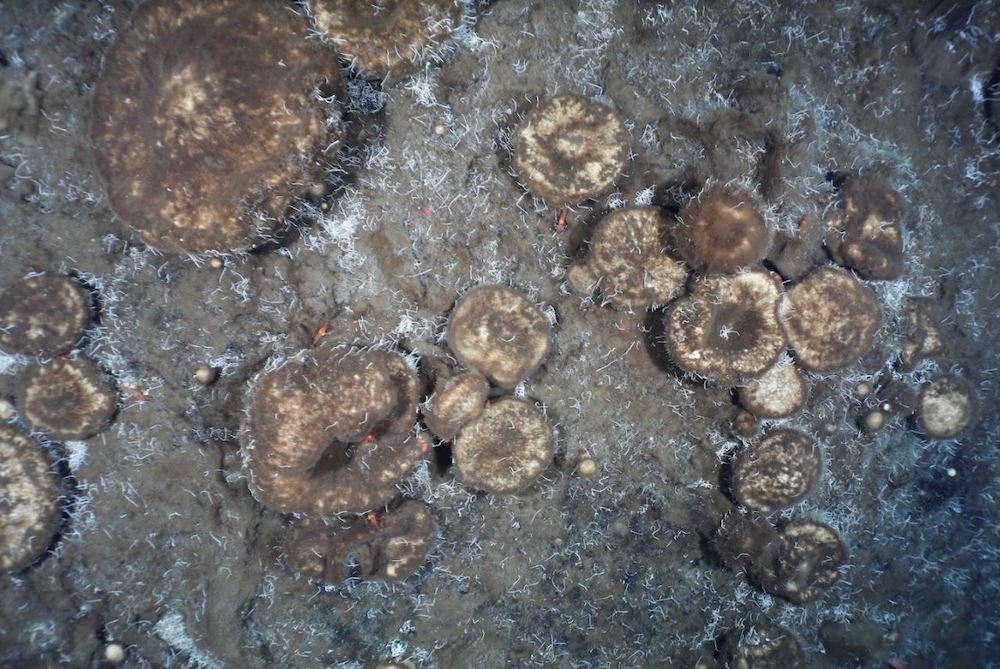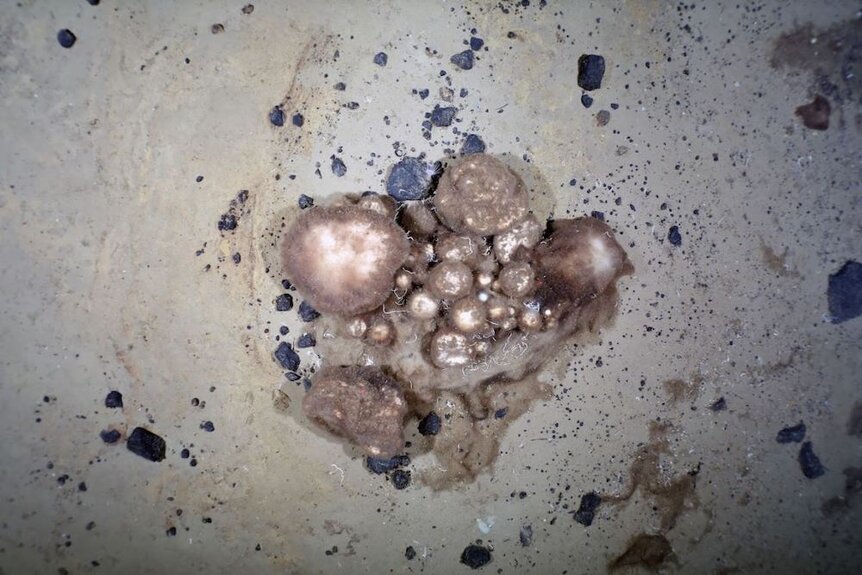Create a free profile to get unlimited access to exclusive videos, sweepstakes, and more!
Deep sea sponges gnaw on the bones of an ancient oceanic graveyard
How can you be so soft, yet so metal?

Sea sponges are some of the oldest life forms on Earth, so you’d think we’d know a good deal about them, but when it comes to ocean ecosystems there are endless surprises awaiting us in the deep.
Teresa Maria Morganti from the Max Planck Institute for Marine Microbiology, and a team of colleagues, discovered a sponge garden in the Central Arctic Ocean where none should have been. There, they found a robust population living on the ancient remains of an extinct ecosystem. Their results were published in the journal Nature Communications.
Sponges are typically filter feeders, pulling nutrients out of the water column. We thought this required that they live in places which are otherwise biologically active. Much of their food comes from particles falling through the water to the sea floor from primary producers near the surface. The discovery of this population atop an ancient seamount in the arctic challenges that idea.
“This is an area which is permanently covered by sea ice. There is no primary production and not much particle sinking,” Morganti told SYFY WIRE. “We started looking for possible local food sources and found this extinct community.”
Beneath the sponges, scientists found a vast ancient graveyard comprised largely of tubeworm skeletons and bivalve shells. They dated the remains to between 2,000 and 3,000 years ago, when the region was volcanically active. That thermal activity would have provided energy and nutrients to the community of invertebrates which called the area home. Then the activity stopped, and without the volcanic energy source the ecosystem died. It isn’t clear exactly when the sponges made their way to the region, but researchers believe they showed up later, found the dead remains of a once thriving environment, and set up shop.
“We dated the sponge tissue and found an average of 300 years old, much younger than the ancient remnants of the community,” Morganti said. “It’s possible sponge larvae were driven by the currents, and they found the seamount, stopped, and settled.”
Living in this novel environment has caused a host of unique behaviors never before seen in sea sponges. Under normal circumstances sponges are largely immobile. They lock down in a good place and let the food come to them. In this extinct environment, food is a little harder to come by, and if the food won’t come to you, sometimes you have to go to it.
“We found trails on the seafloor with a sponge at the end, suggesting that sponges can crawl little by little on top of the substrate in order to relocate themselves. That’s a unique feeding mechanism that’s never been observed before,” Morganti said.
Moreover, the type of food available is unusual, comprised primarily of chitin and protein inside the leftover tubes. Sponges aren’t able to consume the fossilized remains on their own, so they’ve made an alliance with a specialized type of bacteria.
Sponge tissues were colonized by several types of bacteria, but most abundant among these was chlorflexi. Morganti and the team worked with collaborators to do genetic analysis of the bacteria and found that they are capable of degrading complex organic material, turning it into a food source the sponges can live on.
“This is the first time we’ve observed sponges relying on a food source from underneath and not from the water column. The bacteria degrade the tubes, and the sponges take what’s released by the degradation,” Morganti said.
There’s plenty to degrade. These sponges are sitting on top of a buffet of fossilized remains. The depth of the food mat was measured to between 10 and 15 centimeters spread over 15 square kilometers. There’s enough food there for the population to subsist quite a while.
“Sponge metabolism is very slow and they’re in a polar region with cold temperatures. Everything is slow. These sponges could stay there for hundreds of years,” Morganti said.
There’s a sort of beauty in the knowledge that even when the world ends, as it must have done for this extinct volcanic community, life finds a way to make something new out of the bones of what remains.















